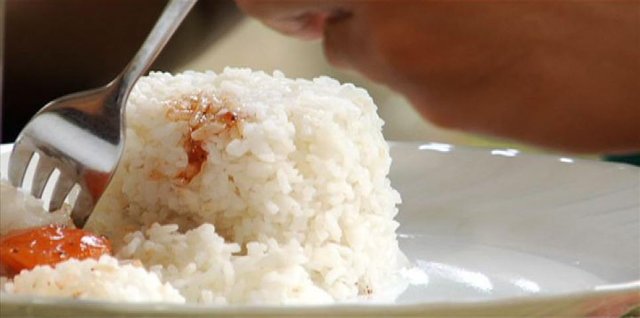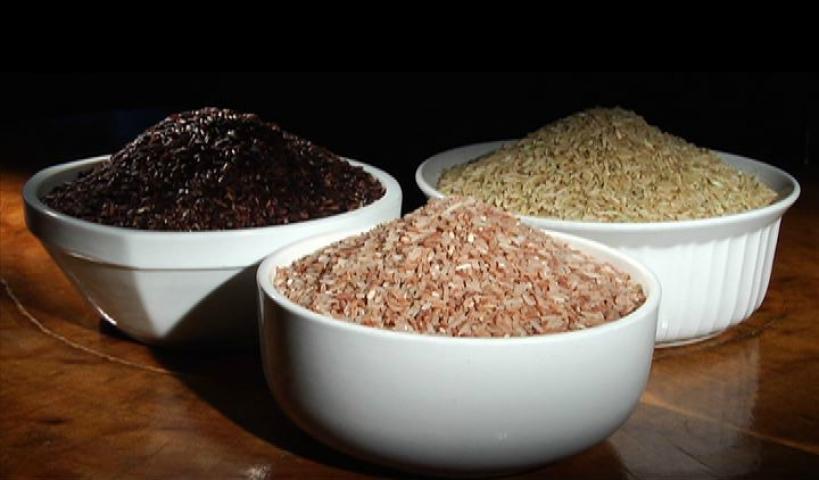Here's why brown rice is better than white
In the ‘80s, Chinese restaurants around San Francisco served brown rice as it's the standard among rice-offering restos in the US. But as the years went by, restaurants in the Bay Area began to replace brown rice with white.
The reason, said Dr. Robert Lustig of the University of California, San Francisco (UCSF) Division of Endocrinology, was because white rice was more profitable.
“In San Francisco, they charge for rice,” Lustig said. “In New York, they don't; rice is free. And San Francisco restauranteurs figured out, ‘Hey, when we serve brown rice, people only eat half a bowl. But when we serve white rice, they eat two bowls.”
What made it more profitable was...all the sugar in the white rice.

Two kinds of sugar
At the “Fats and Sugars: Friends or Foe” forum in Makati Shangri-La, Lustig explained that sugar is an addictive, hedonistic substance that “activates the reward center” of the brain.
“It's not as addictive as heroin, it's not as addictive as cocaine, but it's addictive,” he said. “The problem is you can't get away from it because it's been put in all the food.”
The doctor clarified that there are two kinds of sugar: dietary sugar and blood sugar aka glucose.
Glucose is a form of sugar extracted by the body from sugars and starches in fruits, vegetables, and other foods. It is regulated by insulin, which is produced by the beta cells in the pancreas.
When glucose is joined by fructose, another simple sugar usually found in fruits, it turns into sucrose.
Sucrose is commonly found in sugar cane, sugar beets, corn, and other plants where it is extracted and refined into dietary sugar.
As an article on Harvard regarding Lustig's lectures noted, glucose can be used as energy by every cell in the body.
Fructose, meanwhile, can only be broken down by liver cells into triglyceride, a form of fat, uric acid, and free radicals.
Having a sugar-heavy diet exposes consumers to insulin resistance, a condition where various cells in the body do not respond to insulin and cannot easily absorb glucose from the bloodstream, necessitating higher levels of insulin that your beta cells may not be able to produce.
Insulin resistance leads to diabetes, and high fructose intake leads specifically to type-2 diabetes as well as other diseases as a consequence of the metabolic syndrome, a host of symptoms including heart diseases that anyone can contract regardless of weight or body structure.

Why brown rice is better for you than white rice
White rice is glucose minus the fiber found in brown, red, and black rice; it’s been refined and washed to attain its white color.
“If you consume rice with its inherent fiber which comes with brown rice, then you're getting the fiber that helps with the absorption. There are plenty of studies that show the blood glucose level is one-half as high, therefore your blood insulin level is one-half as high, when you consume brown rice instead of white rice,” Lustig explained.
It is the fiber found in brown rice that caused customers in San Francisco to feel full in half the amount white rice did. That’s the reason why they ordered less brown rice compared to white rice.
“It was a business strategy,” Lustig said. “Brown rice has fiber, brown rice is how rice comes. White rice is processed food.”
Fat is not fat and sugar is a conspiracy
A low sugar and high fiber healthier diet can help lower the chances of contracting metabolic syndrome and help reduce visceral fat, the true bad kind of body fat.
Lustig explained that “subcutaneous fat” or the fat physically seen around the body — what we know as love handles — “is not clinically important; it's cosmetically important.”
It is visceral fat or abdominal fat — fat that wraps around the internal organs is what we have to be wary of.
The reason why sugar has been so heavily featured only as of late is the resurfacing of documents proving that what is today known as the Sugar Association paid off Harvard University researchers at least $48,900 in 2016 to blur sugar's connection to heart disease and shift the whole blame on to saturated fats.
News agencies and publications such as New York Times, NPR, and The Guardian reported on these documents published in JAMA Internal Medicine in September 2016.
“We have been living a lie for the past 45 years. We now have the paper trail and the smoking gun to prove it. We have the empiric data to show that sugar is the causative factor for all these diseases,” Lustig said.
#life
Bob Marley:Love the life you live. Live the life you love.@originalworks
The @OriginalWorks bot has determined this post by @applereddish to be original material and upvoted it!
To call @OriginalWorks, simply reply to any post with @originalworks or !originalworks in your message!